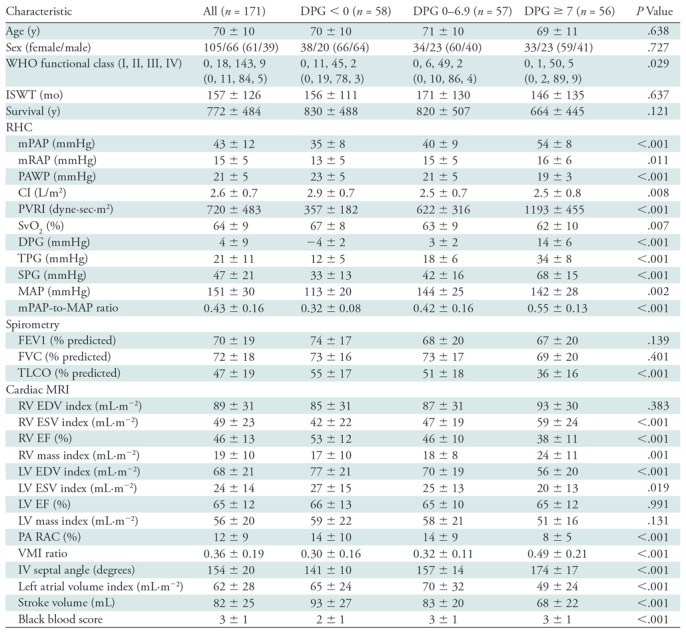Table 1:
Baseline Patient Demographics, Hemodynamics, and Cardiac MRI Metrics in Patients with Pulmonary Arterial Wedge Pressure Greater than 15 mmHg, Split by the Diastolic Pulmonary Gradient

Note.—Continuous variables are presented as mean ± standard deviation. Categorical variables are presented as number, with percentage in parentheses. Analysis of variance was used to calculate significance of difference between groups for continuous variables, and χ2 test was for categorical variables. CI = cardiac index, DPG = diastolic pulmonary gradient, EDV = end-diastolic volume, EF = ejection fraction, ESV = end-systolic volume, FEV1 = forced expiratory volume in one second, FVC = forced vital capacity, ISWT = incremental shuttle walk test, IV = interventricular, LV = left ventricle, MAP = mean systemic arterial pressure, mPAP = mean pulmonary artery pressure, mRAP = mean right atrial pressure, PA = pulmonary artery, PAWP = pulmonary arterial wedge pressure, PVRI = pulmonary vascular resistance index, RAC = relative area change, RV= right ventricle, SPG = systolic pressure gradient (sPAP-PAWP), SvO2 = mixed venous oxygen saturations, TLCO = transfer factor for carbon monoxide, TPG = transpulmonary pressure gradient (mPAP-PAWP), VMI = ventricular mass index, WHO-FC = World Health Organization-Functional Class.
